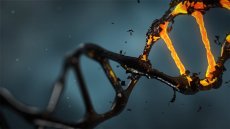Parents will have the opportunity to adjust the appearance of future children
Last reviewed: 16.10.2021

All iLive content is medically reviewed or fact checked to ensure as much factual accuracy as possible.
We have strict sourcing guidelines and only link to reputable media sites, academic research institutions and, whenever possible, medically peer reviewed studies. Note that the numbers in parentheses ([1], [2], etc.) are clickable links to these studies.
If you feel that any of our content is inaccurate, out-of-date, or otherwise questionable, please select it and press Ctrl + Enter.

Known to many DNA editor CRISPR is able to prevent many diseases before the birth of a person. But is it possible to apply this technology not to get rid of diseases, but for other purposes - for example, to change external data? Probably, scientists will be able to provide such a "service" in the near future.
According to the information described in the magazine The Independent, a number of specialists from the UK have studied the technology of DNA editing well. Now they are confident that they will be able to change the external data of the future offspring.
Scientists are sure that the uniqueness of CRISPR will help them to influence the color shade of hair and eyes, and even change the growth of the future person.
By the way, a few years ago, the British believed that the intrauterine correction of the genome is an unacceptable procedure that does not fit into the moral and ethical framework. But in recent years, the perception of the situation has changed for the better: such technologies are quite acceptable.
Doctor of Biological Ethics, representative of the Nuffield Council Karen Jung explains: "I believe that any changes made by a person in the structure of DNA, have the right to exist only in two cases. First, the changes should not lead to an increase in discrimination. Secondly, they should not cause stratification within society. "
Nevertheless, do not expect that soon the procedure for correcting the appearance of children will become a reality. In the scientific world, everything is not so simple: scientists have to conduct many more studies and tests. Even if one considers that the technology of DNA-editing has been used for several years for the intrauterine effect on the development of many serious diseases (for example, autism, defects in various organs, malignant predisposition), the method has not yet been used as a permanent clinical procedure.
Recall that the technology includes the RNA molecule CRISPR, in which you can introduce the necessary recognition segment in the genome, as well as the region interacting with the enzymatic protein material Cas9, "cutting" the DNA in the structure of another organism. So, the RNA sends to the necessary place an enzyme substance that breaks the DNA molecule. After this, the natural mechanism, called the non-homological union of the ends, "glues" the place of the rupture. At the same time, nucleotide residues can be lost or added. Under such a scheme, genetic information changes in the zone of the incision, and a mutation occurs in a previously defined portion of the DNA. To date, many scientific groups in practice use this technology, and its rapid development is really encouraging.
Details of the research of scientists are described on pages https://www.independent.co.uk/
 [1]
[1]
